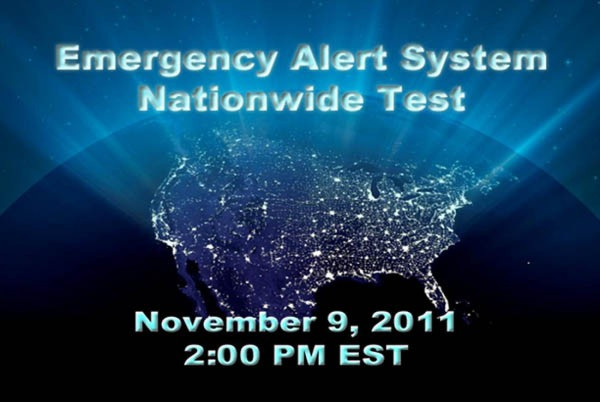Emergency Alert System to Sound off at 2 p.m. EST: What You Need to Know

Before you toss your remote in the air and start banging your television wondering what happened to your favorite daytime soap, take note: at 2 p.m. EST on Wednesday Nov. 9, the Federal Emergency Management Agency (FEMA) and the Federal Communications Commission (FCC) will conduct the first ever nationwide test of the Emergency Alert System.
The test is to assess the readiness and effectiveness of the current system to better serve our communities in the preservation of life and property, according to a statement on FEMA's Web site.
The test, in operation for more than 15 years, will be similar to the brief - albeit annoying - Emergency Alert System's tests heard on the radio.
Expect the familiar message: This is a test. This is only a test.
While the Emergency Alert System is frequently used locally or regionally to send weather alerts and Amber alerts for children in danger, this will be the first time it's used on the national level.
In addition to all radio stations across America, all local, cable, and satellite TV stations will be involved. Cell phones and the Internet will not be affected, a point of contention with many.
According to FEMA, the test should last approximately thirty seconds, far less than the original plan of three minutes.
For thirty seconds, every household, car, and business in America will be treated to the pulsing, squawking sound effects of the emergency alert.
If you're listening to the radio and can't stand the noise, there is one station you can turn to. The NOAA weather radio will continue broadcasts as usual (something that many windswept Alaskans can be thankful for).
Several cable companies sent out messages to their subscribers warning of the Nov. 9 test.
Comcast, for example, told its users:
Your Comcast programming will be temporarily interrupted. However, as soon as the test ends, you will be returned to your regularly scheduled programming.
They also warned that, although service interruptions were not expected, in some rare cases you may need to channel up and then channel down or power down your box to fully restore programming after the test completes.
Once completed, Comcast warned that it may take up to 20 minutes to refresh the information.
Comcast also notes that any DVR recordings in progress during the test will be interrupted and, in some cases, lost.
Several local police forces are concerned that the test may cause anxiety or panic in residents unaware of its purpose. Cities large and small sent out notices to inform the public. New York City officials sent out a brief notification on Wednesday while some cities like Frederick, Maryland went so far as to issue a press release urging residents to stay calm and develop an understanding of how the National Alert works.
A regional test in Alaska last year showed that, although successful overall, several operational and technical issues needed to be fixed in the alert system.
A similar test of the tsunami warning alert system sent through the Caribbean earlier this year found that there were challenges with localized signal reception and audio quality of the message.
FEMA and the FCC will use the results of the nationwide test to assess the reliability and effectiveness of the Emergency Alert System as a public alert mechanism. Depending on how things go, they will then work with Emergency Alert System stakeholders to make improvements to the system as needed.
© Copyright IBTimes 2024. All rights reserved.






















